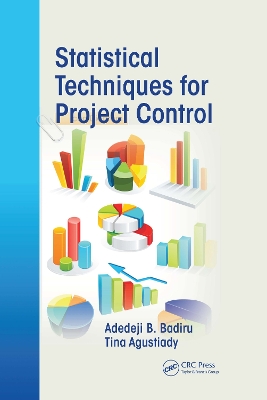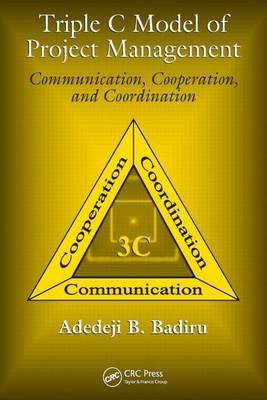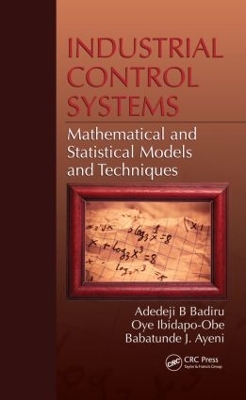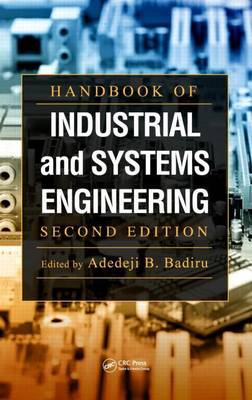Industrial Innovation
1 primary work • 8 total works
Book 16
Handbook of Industrial Engineering Equations, Formulas, and Calculations
by Adedeji B. Badiru and Olufemi A Omitaomu
Statistical Techniques for Project Control
by Adedeji B. Badiru and Tina Agustiady
Winner of the IIE Book of the Month for June 2012
A project can be simple or complex. In each case, proven project management processes must be followed. In all cases of project management implementation, control must be exercised in order to assure that project objectives are achieved. Statistical Techniques for Project Control seamlessly integrates qualitative and quantitative tools and techniques for project control. It fills the void that exists in the application of statistical techniques to project control.
The book begins by defining the fundamentals of project management then explores how to temper quantitative analysis with qualitative human judgment that makes project control nebulous but also offers opportunities to innovate and be creative in achieving control. The authors then discuss the three factors (time, budget, and performance) that form the basis of the operating characteristics of a project that also help determine the basis for project control. They then focus on computational network techniques for project schedule (time) control.
Although designed as a practical guide for project management professionals, the book also appeals to students, researchers, and instructors.
Project Management for the Oil and Gas Industry
by Adedeji B. Badiru and Samuel O Osisanya
While the project management body of knowledge is embraced by disciplines ranging from manufacturing and business to social services and healthcare, the application of efficient project management is of particularly high value in science, technology, and engineering undertakings. STEP Project Management: Guide for Science, Technology, and Engineering Projects presents an integrated, step-by-step approach to managing projects in these complex areas, using the time-tested concepts, tools, and techniques of the Project Management Body of Knowledge (PMBOK (R)).
STEP is an acronym for Science, Technology, and Engineering Projects, and also serves as a mnemonic reference to the step-by-step approach of the book.
This volume takes an approach that combines managerial, organizational, and quantitative techniques into a logical sequence of project implementation steps. The book begins by exploring the special methodology imperative for managing these types of sophisticated projects. It then delineates the major steps involved in project integration. The author discusses the management of scope, time, cost, quality, human resources, communications, risk, and procurement. Then, using a compelling case study that profiles the errors leading to the 1986 Challenger disaster, the book examines how flaws in decision-making, failure to consider all factors, lack of communication, and inappropriate priorities can lead to catastrophe.
In today's fast-changing IT-based, competitive global market, success can be even more elusive and hard won. Effective project management in all facets of operations can give an enterprise the advantage it seeks. In this book, the author's direct writing style, designed to appeal to busy professionals, conveys the complex concepts of high-stakes project management in a simple, efficient manner. He provides a general framework that shows what needs to be done to manage complex projects, using steps that are flexible, expandable, and modifiable.
Industrial Control Systems
by Adedeji B. Badiru, Oye Ibidapo-Obe, and Babatunde J. Ayeni
Issues such as logistics, the coordination of different teams, and automatic control of machinery become more difficult when dealing with large, complex projects. Yet all these activities have common elements and can be represented by mathematics. Linking theory to practice, Industrial Control Systems: Mathematical and Statistical Models and Techniques presents the mathematical foundation for building and implementing industrial control systems. The book contains mathematically rigorous models and techniques generally applicable to control systems with specific orientation toward industrial systems.
An amalgamation of theoretical developments, applied formulations, implementation processes, and statistical control, the book covers:
- Industrial innovations and systems analysis
- Systems fundamentals
- Technical systems
- Production systems
- Systems filtering theory
- Systems control
- Linear and nonlinear systems
- Switching in systems
- Systems communication
- Transfer systems
- Statistical experimental design models (factorial design and fractional factorial design)
- Response surface models (central composite design and Box-Behnken design)
Examining system fundamentals and advanced topics, the book includes examples that demonstrate how to use the statistical designs to develop feedback controllers and minimum variance controller designs for industrial applications. Clearly detailing concepts and step-by-step procedures, it matches mathematics with practical applications, giving you the tools to achieve system control goals.




